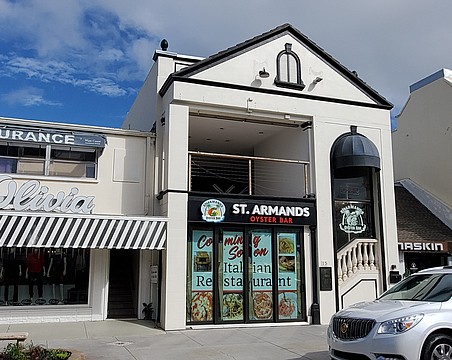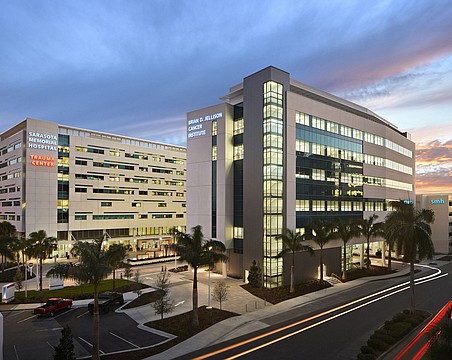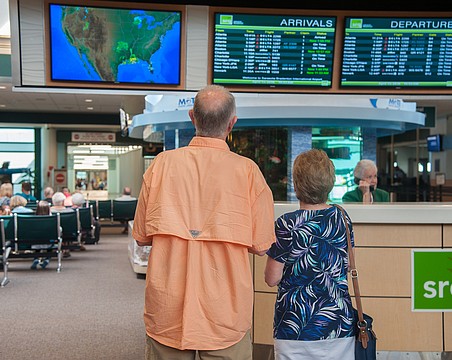Conference Center Be Unconventional
If you missed the Sarasota conference center forum sponsored by the Greater Sarasota Chamber of Commerce on Monday, Dec. 13, or even if you were there, hereis a two-sentence synopsis:
1. Sarasota is ripe for and would be attractive as a new destination among the nationis meetings and conventions attendees.
2. The chamberis conference center committee and meeting planner professionals say taxpayers and tourists inevitably will have to subsidize a centeris construction and operation.
Neither of the above is a startling revelation. In fact, about everything attendees heard theyive heard before.
Nonetheless, Mondayis session was good for self-esteem and momentum. Itis always nice to hear outsiders o in this case, four convention and meeting planner professionals o tell you youire attractive and would like to go out with you. Itis nice to be loved.
But cut to the quick. The 20-year discussion about a conference center in Sarasota has reached a crucial moment again: If Sarasota is to have such a facility, it must decide o now o where it will be and how it will be financed. As Manatee Community College President Sarah Pappas aptly put it: The window is closing on sites, given the amount of downtown development and discussions about a bayfront cultural district.
West of the Trail
Based on Mondayis meeting, Tim Clarke, the chamberis point man on the conference center, says the chamber will advocate a center on the west side of Tamiami Trail, likely the Sarasota Garden Club site (see Coffee Talk, page 3). A few other, perhaps better, sites to consider:
a) The Quay, because it straddles the Ritz-Carlton and Hyatt and would be more walkable to downtown than the Garden Club site. But Irish developer Patrick Kelly is not likely to give up his Quay property for a venture that would not produce as high of a return as, say, high-end condos.
b) Somewhere in that Never Never Land north of Fruitville, west of Lemon, south of 10th and east of Tamiami Trail. The Renaissance property, once considered for a conference center, would have been great. Oh well.
c) And, finally, our favorite site: the Gwiz science museum. Talk about an incredibly wasted piece of real estate. With all due respect to the Gwiz supporters, itis a fiscal and real estate crime to use the former Selby Library site for a hands-on playground.
In fact, in hindsight, itis a shame the then-near-sighted city commissioners squawked at Colony owner Murf Klauberis conference center idea of about five years ago. Klauber envisioned a center where we now have a publicly subsidized grocery store.
As for financing, Mondayis speakers and Clarke let it be known o although everyone already knew it o that a conference center will require taxpayer funding. Financing mechanisms are likely to include taxpayer-collateralized revenue bonds, tapping bed tax revenues on existing hotels and condos and probably some type of public land donation. Three of the speakers at Mondayis meeting said taxpayers should expect to subsidize a center in perpetuity.
As everyone spoke of the economic benefits of a conference center, you couldnit help but think: Why not private financing? Why not for-profit conference centers?
Itis an article of faith in the convention business, however, that public financing is the only way. Thom Connor, an executive at Philadelphia-based SMG, which manages 170 arenas and convention centers, says itis possible to generate operating profits at conference centers, but few do it. Typically, he said, iThey are loss-leaders that generate new (economic) activity.i
An unearned benefit
In other words, most communities have accepted subsidizing their convention centers because they help generate hotel room nights, restaurant visits and retail buying that otherwise might not occur and that offset the centeris subsidies.
But itis still a subsidy o a redistribution, or taking, of one taxpayeris money for the unearned benefit of someone else. Say, for instance, Sarasota County and Sarasota city issue revenue bonds tied to bed taxes to finance the construction of a conference center. This would mean that every tourist who visits here, regardless of whether he uses the conference center, would be taxed, probably more than he is now, to pay for the conference center.
So take the Snowbird who rents a condo in Venice for three months. He would be taxed to pay for a conference center that he wouldnit use so he could offset the cost that conference center attendees from, say, Ohio would have to pay to use the Sarasota center. Whatis the saying about taxes? The best tax is the one that someone else pays. Still, thereis never anything fair about taking from one to give to another.
Hereis something else about the subsidies: Typically, they turn out to be bigger than projected. Heywood T. Sanders, professor of public administration at the University of Texas at San Antonio, is one of the foremost scholars, researchers and writers on convention centers. In a 1998 article, called iConvention Center Follies,i he reported on the results of the Providence, R.I., convention center, which was cited at Mondayis meeting as one of the best operated mid-size centers in the nation. Said Sanders:
iThe stateis plans for the center were supported by a feasibility study by Coopers & Lybrand, which estimated the facility would attract 42,000 delegates yearly, each of whom would stay four nights, for a total of more than 160,000 hotel-room nights. Yet, since its 1993 opening, the center's performance has fallen well short of that figure. A study of the center's activity during fiscal year 1995-96, by the University of Rhode Island, concluded that the center generated just 59,451 hotel-room nights. That amounts to almost one-third of the consultant's projection.
iThe implications for the state are serious,i Sanders wrote. iThe state not only has to pay for the debt service on convention-center bonds, it now has to make up for an operating deficit where Coopers & Lybrand had once forecast an annual profit.i
Privately financed?
And yet, in city after city, business leaders campaign for new, bigger convention facilities. But if they are so wonderful, the logical question is: Why canit the private sector finance its own conference center and make it a profitable business?
Clarke says there are four expensive pieces: the land, construction costs, parking and operations. Sounds like a typical real estate venture. It should be do-able.
In fact, it is. The new professional hockey team in Lakewood Ranch is making a go of it, building a new privately owned hockey arena. The late Joe Robbie did it when he built a new stadium for his Miami Dolphins. Entrepreneur Wayne Huizenga, founder of Waste Management and successor owner to Robbie, once said making a profit at a stadium is no different than a movie theater. Youire filling space. You have to figure out how to fill the space over and over.
Of course, attracting attendees becomes more difficult if you have to compete against centers whose prices are heavily subsidized. But from what the experts said Monday, Sarasota has an attractive cache: It would be a relatively new venue for many conference goers. iPlanners are always looking for new venues,i said Amy Martel, an associate at HelmsBriscoe, the worldis largest site selection and meeting services company, and one of the Monday speakers.
We heard Ed Griffin, new president of the Florida Hotel and Motel Association and longtime meeting planner executive, urge Sarasota conference center builders to target a niche and invest heavily to make it the best of its class. Be apart from the crowd. While everyone else is adding hundreds of thousands of square feet to go after the white elephants, Griffin urged specialization. Martel urged the design of a center that makes attendees feel as if they are experiencing what is uniquely Sarasota o beaches, gulf, views, what she and others called ithe real Florida.i Their message: think small.
Multiple conference centers
Perhaps, then, the 100,000-square-foot, specialized center that Clarke envisions could be financially feasible with private-sector investing. Just as entrepreneurial bankers sell shares to raise capital to start up their local banks, conference center promoters could do the same. Sell equity. Like most bank stocks for the first 10 years, it would be an illiquid investment. But such a route would avoid the distasteful and conventional practice of creating another public financial burden and source of public scorn. Such an approach also would show whether the conference center advocates are really willing to put their money where their mouths are.
As a privately-owned venture, a conference center also would demand the intense management of a for-profit business, as opposed to the government approach. As economist Milton Friedman puts it: iThose who spend their own money on themselves are careful about how much they spend and what it buys. O Those who spend someone elseis money on someone else arenit careful about how much or what it buys.i
A final thought: We tend to focus on building big boxes to attract large numbers. Clarke envisions a 100,000-square-foot center that could accommodate 2,500 to 4,000 attendees. Maybe the approach should be more like that suggested by Professor Sanders when he spoke to a Buffalo, N.Y., reporter about that cityis desires for a convention center. Said Sanders:
iRead eCities Back from the Edge,i by Roberta Brandes Gratz and Norman Mintz. They show that revitalization works where you have multiple small-scale undertakings, not blockbuster public investments. Compare SoHo to the West Side projects around the Javits Center o one wasnit centrally planned at all, it just happened as people discovered inexpensive space available in attractive buildings, and itis thriving. The other has received all kinds of public attention and isnit going anywhere.
iI saw the same thing in Cincinnati,i Sanders said. iOne area had quietly become a hub for diverse small enterprises o restaurants, offices, entertainment o attracting them with nice buildings and low expenses, and it was full of people; across town was the area the city had been trying to revitalize via a plan involving large direct public investment, and it was dead, no one around. Big-box development just doesnit work.i
Maybe itis not one conference center. Maybe Sarasota should have multiple smaller conference centers that are all privately financed. The gurus said it best: Be unique. Donit do what everyone else does.





